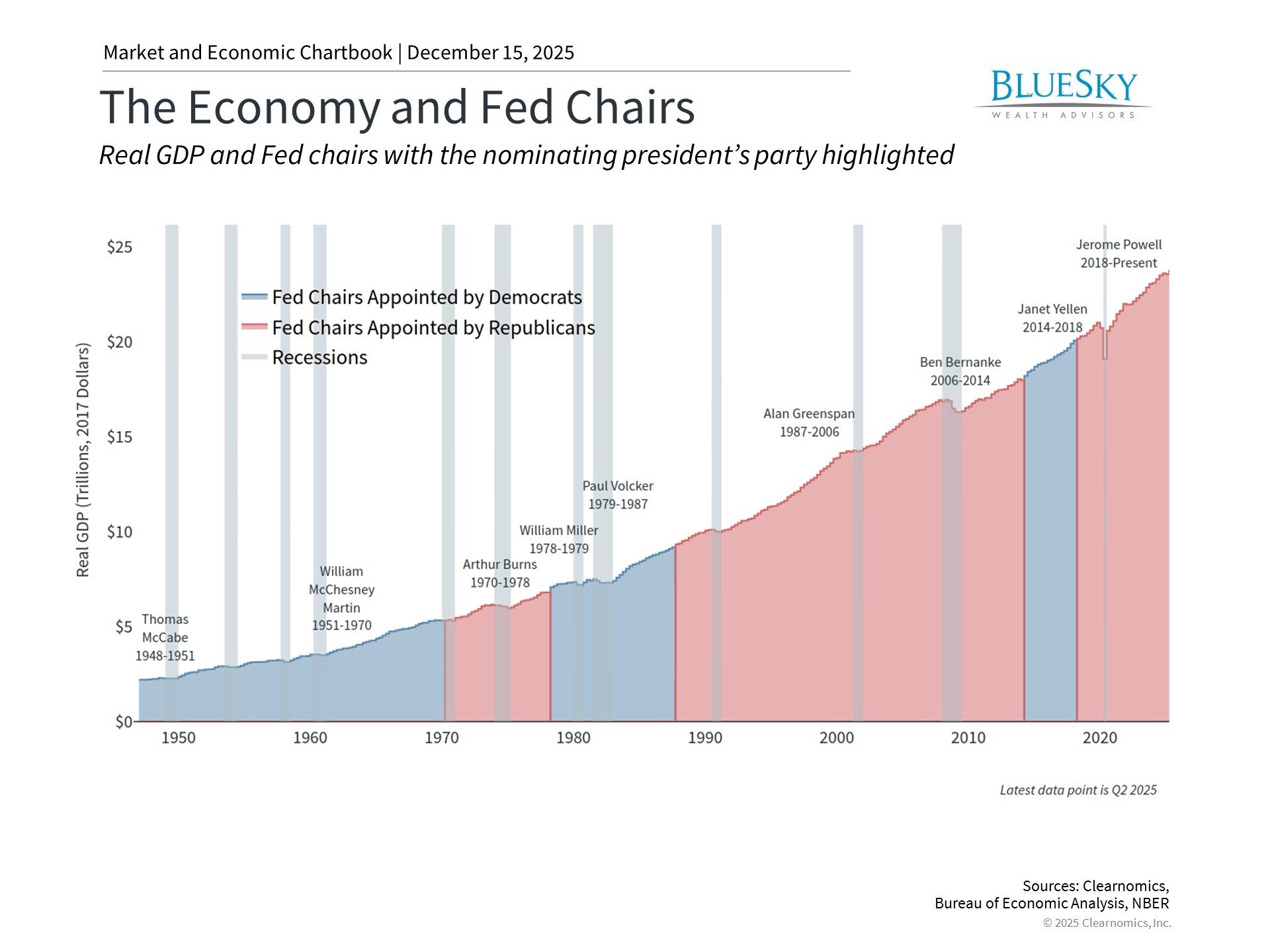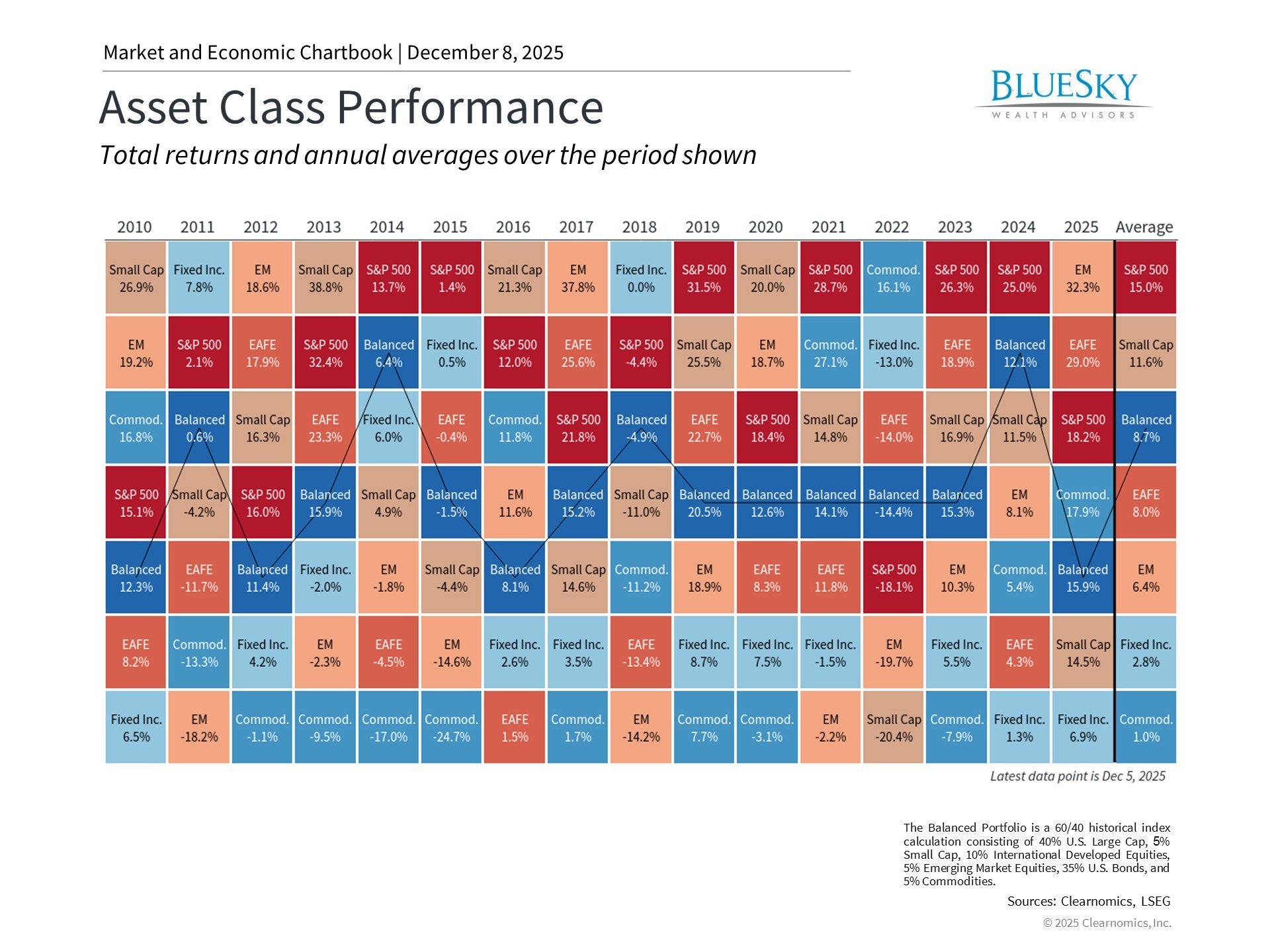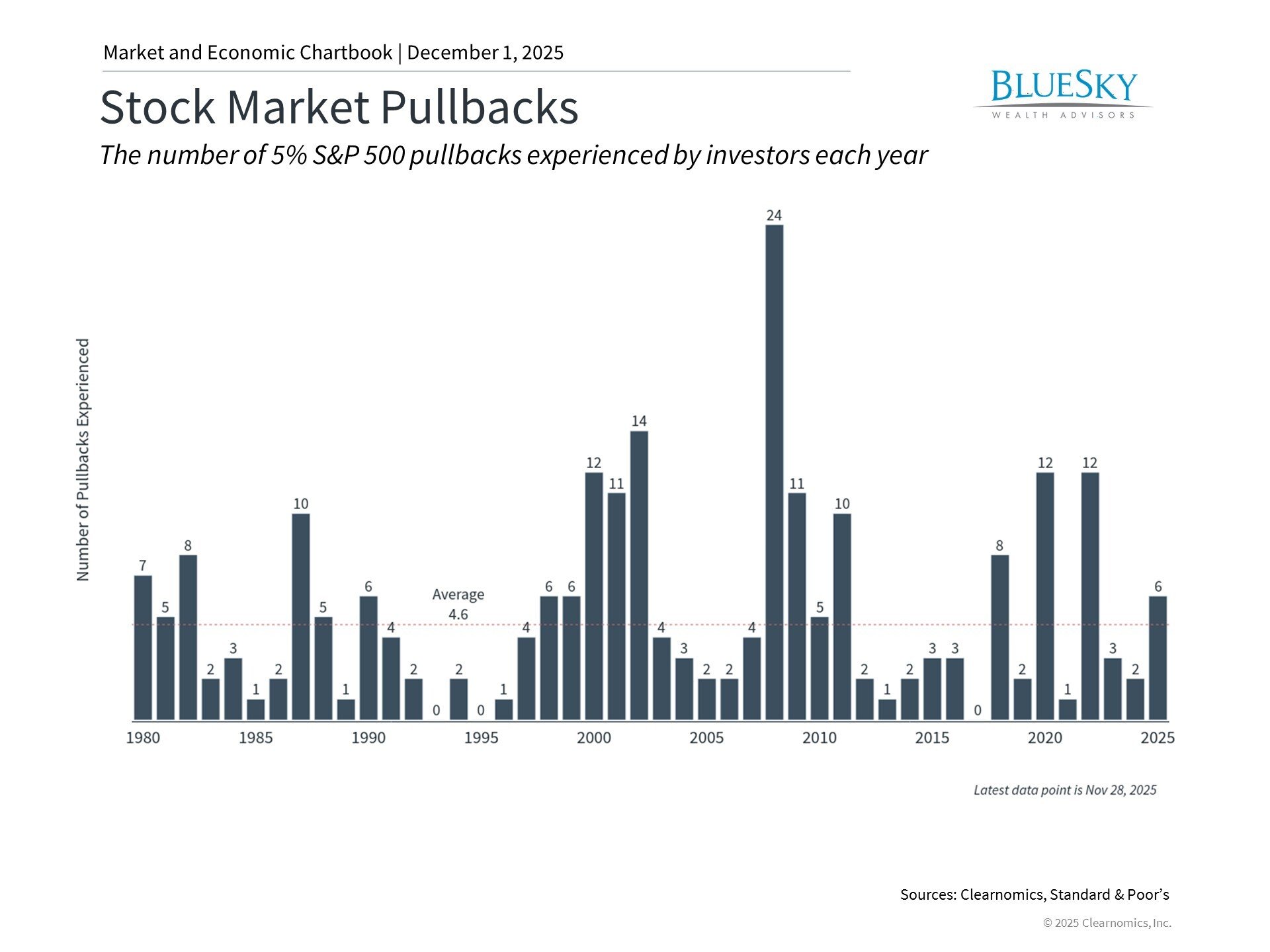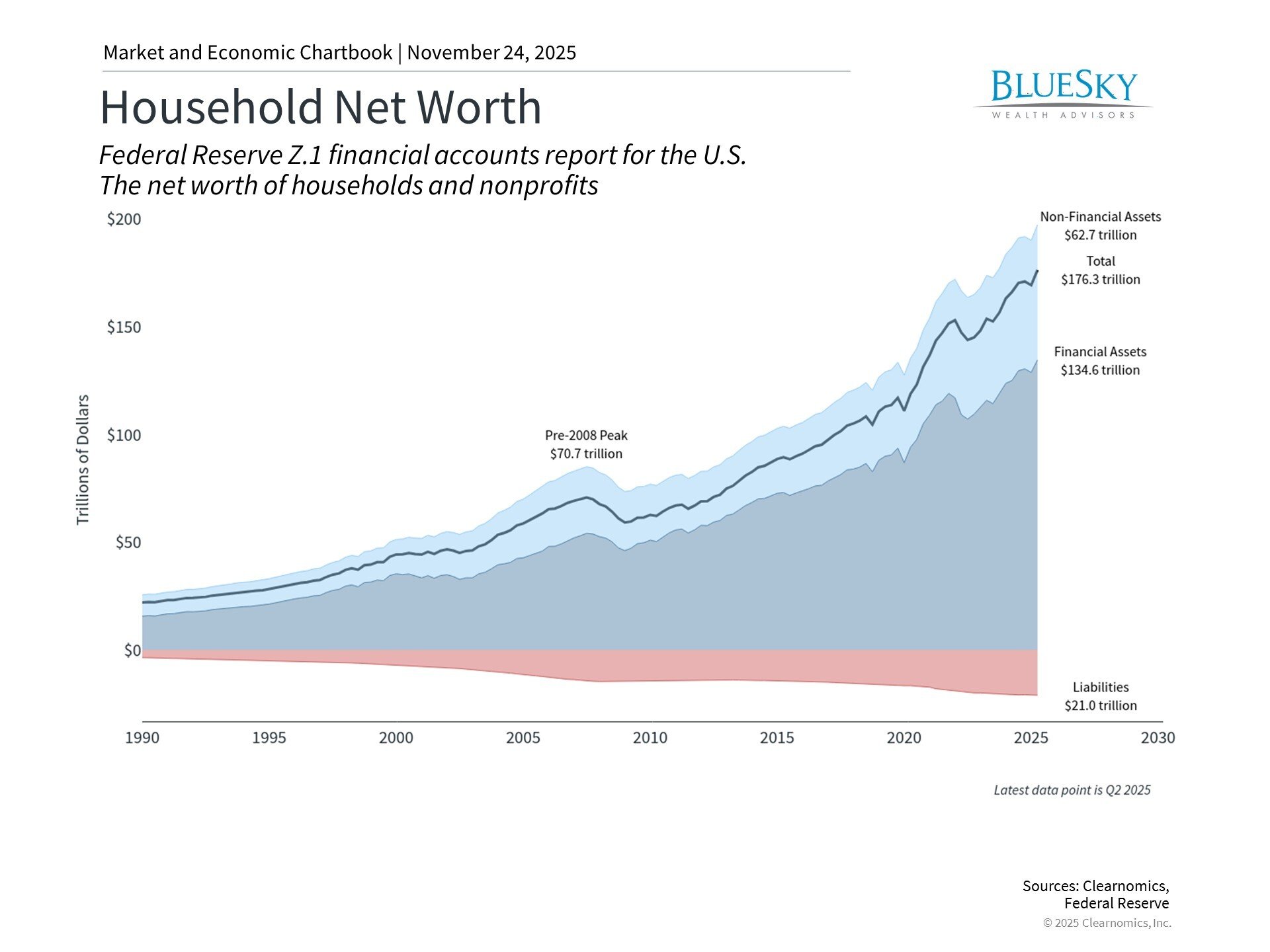
MARKET UPDATE: NEW LEGISLATURE & PANDEMIC STRATEGY - BlueSky Wealth Advisors
MARKET UPDATE: NEW LEGISLATURE & PANDEMIC STRATEGY - BlueSky Wealth Advisors

In BlueSky’s client-exclusive LIVE Webinar, David Blain, CFA provides insight into the new legislature passed and delivers a realistic, yet optimistic, update on the current market. Read the edited transcript below.
The Four Pieces of New Legislature
The first thing. There’s been four major things that have happened, four pieces of legislation. The number one was what’s called the Family First Coronavirus Response Act. And what it did was expand sick leave and the Family Medical Leave Act, it expanded that for businesses. If you’re a business owner, you’re now required to give 10 days’ sick leave as well as some medical leave under the FMLA for people that are sick or their school or daycare is closed down and they have to stay home to watch their children. whether you’re an employer or an employee, this both has implications for both of you.
The next major piece of legislation was just passed today and there’s a whole bunch of things in this one. It’s called the CARES Act, the Coronavirus Aid Relief and Economic Security Act. President Trump is expected to sign this, so we don’t expect a lot of changes to this one. Unemployment has been expanded to include self-employed people in addition to lengthening the amount of time and providing for a federal 600 minimum, $600 a week payment. So, if you do find yourself unemployed from your job or there is relief on the way, of course it’s still run through the states, but with a lot of federal support. The big impact for most people is going to be the direct payments to taxpayers. This provides payments directly to married couples up to $2,400 plus 500 per child. For single people, $1,200 plus 500 per child. It’s really confusing because you’ll get a payment early, but it will be reconciled on your 2020 tax return based on your 2018 or 2019 tax return, whichever has been filed.
The next big thing is the required minimum distributions have been suspended for the year. There’s also a provision if you’ve already made your RMD for the year to get it back. There are also exceptions to the retirement plan penalty for early withdrawals. If you need to, you can withdraw up to $100,000 penalty free from a 401(k) or IRA and you will be able to pay that back into that same account over three years or pay the tax associated with it over three years. That’s a pretty good benefit.
There’s a new above the line deduction for charity and over the counter drugs that you buy at the drugstore are now eligible expenses from your HSA or FSA. Some employer things. Employers are now eligible to make student loan repayments on behalf of employees and all student loan repayments are put off until September. There’s also a retention credit for employers to retain employees and don’t lay them off during this time period. There’s an employer payroll tax delay, which will allow the employer portion of social security to be delayed for two years. They’re not going to have to pay it back. There’s also some net operating laws change that were just changed in the 2017 Tax Reform Act that are now being changed back so that businesses can take those net operating losses.
There’s also the new paycheck protection loans, which will allow small businesses to borrow up to $10 million through the SBA from the government to be used for eligible expenses that will include payroll, rent, mortgage, utilities, things like that, and part of that loan will be forgivable if it’s used for those eligible expenses. This is a huge benefit. It’s got a lot of nuances to it, but it’s going to be a widely used thing. There’s also the SBA disaster loans. This program was already in effect before this recent crisis, but the economic damage loans through the SBA are available as they always have been, but most counties in America, I think all of them at this point have been declared a disaster area for the purposes of these SBA loans.
There’s a lot of things in the recent legislation that apply to almost every taxpayer, almost every citizen in America, whether still employed in their job and eligible for some sick leave, whether unemployed, whether a business owner, whether they’re just going to get a stimulus check. There’s a lot of—almost $2 trillion worth—of stimulus in this bill and so I’ve just tried to give you the highlights of that.
The other two pieces of legislation we’ll talk about: IRS Notice 2020-18 which, in fact, did delay the filing and payment of tax until July 15th of this year. It’s interesting if your income is within a certain range and you’re trying to qualify for that stimulus payment, you want to go ahead and file your 2019 income tax if it will qualify you for a bigger stimulus payment as opposed to your 2018 tax return. So, there are some reasons why you would want to go ahead and file that. Here at BlueSky, if we’re processing your tax return, we’re preparing it for you, we’re pressing forward, and we’re going to go ahead and get a lot of those done. Of course, you can still delay paying if you owe a significant amount of money, but by the summer hopefully things will be somewhat back to normal.
I don’t know about you, but I don’t want to be doing taxes in the middle of July. I’d rather get it over with now. The last bullet point I already touched on the SBA disaster loans which have been in the law for a while are also available if you’re economically impacted by this disaster.
Market Activity
Economic Activity. Economic activity has been severely hurt by this. It’s not completely at a standstill, but it has been hurt. Whether it goes into recession or not, we’ll only know after the fact. And there’s nobody right now that’s predicting that we won’t have a fairly quick recovery. There’ll be some lingering effects for sure, some companies will be out of business, there’ll be effects on into the summer. But we’re not going to see multiple quarters in a row of 20-25% GDP decline.
Inflation. Inflation may heat up if we see monetary stimulus, although if you have less economic activity, typically holds inflation down. Higher debt does typically lead to slower growth; but it also leads to lower inflation. It really is hard to tell after the great recession and all the monetary stimulus that took place, people thought for sure inflation rates were going to rise. Well they didn’t, they’re lower today than they were in the great recession.
Planning
We tell people do not make huge changes in your portfolio. If you’re nervous right now or you think you’re in the wrong portfolio, great. Get with your advisory team and slowly make some adjustments to your investment policy statement. Now is not the time to make giant changes in your portfolio. I’ll talk about later in the webinar how we’ve planned for this. We’ve already accounted for this. We know this kind of stuff happens. It happens on a fairly regular basis. Like I said, ever since I’ve been investing, this has happened multiple, multiple times. And we’ve incorporated that into your planning, we’ve designed a portfolio that can withstand these types of impacts.
We view this as a buying opportunity. One of my favorite investors of all time, a guy by the name of Benjamin Graham, he wrote several books back in the 1930’s as a reaction to the great depression. One of them was called The Intelligent Investor. And I tell you it’s remarkable, when you read it, the things that he said back then are true today, they’ve been true forever. In fact if you have a chance, Sir Isaac Newton actually invested, stocks have been around for a long time and Sir Isaac Newton invested in the South China Sea Company, which was, you probably heard of it from your history classes. They would invest in ships to go to China and do trading and things like that. And they actually have the stock records from the 1600’s in England, from some of these early stock trades. And you actually can see Sir Isaac Newton buying and selling the South Sea Company stock. And he lost tons of money and he swore against investing in stock ever again.
But this is something, it’s human nature is people panic at the wrong time, when in reality everything else in the world, if they said cars are on sale, if they said gas is on sale, milk is on sale, bread, if anything else in the world was on sale by 30-35%, people would be clambering to buy it. It’s only with stocks it’s a sort of panic.
BlueSky’s Value Amidst the Pandemic
All right let’s talk about planning. Number one is if you ever heard me before, we always design our portfolios for people to invest with the least risk required. We want to design a portfolio, if you have very modest goals, let’s say someone has $5 million and they live out in the middle of nowhere on $50,000 a year, they don’t need to take a lot of risk to achieve their goals. And we recommend getting a portfolio with the least amount of risk required. We always do that, we always err on the side of least risk, unless a client says no, I’m comfortable with more risk and I’d rather take the opportunity to make more money.
We also look at everyone’s risk tolerance, which is your psychological ability to assume risk. We use the Finnemetric risk profiling system, which we retest people from time to time. We also gauge your risk just from experience. I’ve been doing this for a long time and when someone sits across the table from me and starts talking, I can sense when their risk tolerance is changing. I can sense when they’re nervous. Sometimes I can explain what’s going on and by the time the meeting’s over, they feel much better. Other times, we will. We may go ahead and adjust their portfolio. But that’s only one input that goes into the portfolio.
Of course, the biggest input is what you need to achieve your returns, which goes back to the first bullet point. If you say, “Hey, I know I don’t have a lot of money but when I get older, I want to fund a wing in a hospital for ICU. My mother died of breast cancer and I want to fund a breast cancer research center”, or something like that. And I’m going to need $50 million to do that. Well great, that’s a very aggressive goal. We’re probably going to have to invest a little bit more aggressively to achieve that. Looking at that, we also take a look at risk capacity. You could come in and say, “Oh I’m very risk tolerant. 50% decline in my portfolio doesn’t bother me a bit”. Well maybe you’re a small business owner, you have several kids getting ready to or go to college. You have your mother living with you and oh by the way your brother in law just moved in with you and you work for a startup. You have a lot of risk in your life, you don’t have the capacity to take a lot of risk in your portfolio. And we’re going to recommend a lower risk strategy for you.
My point in all that is we take this into account when designing your portfolio, the best defense against the bear market like we’re having now is to have portfolios designed correctly ahead of time. Not making a lot of adjustments now, it needs to be designed correctly ahead of time. And our strategy is to design the portfolio to do fairly well in all sorts of different economic environments. Our normal planning incorporates this scenario already. We simulate what happens if there’s a bear market that lasts two years immediately. And, with the exception of the great depression and 2007, 8, 9, this is the worst that we’ve experienced in modern investing history. And we simulate that as if it happens today, when we’re doing your planning. And that’s built into it. In some scenarios, we build in a great recession every couple of years. We look at the worst case scenario and we look for the probability that you’ll be able to achieve your goals over time and we recommend a portfolio that has a likelihood, generally of 70% or more, 75% or more likelihood of reaching your goals.
We look at the probability and within that probability we incorporate worst case scenarios like this. The worst-case scenario is somebody that retired at the end of February and we stress test the portfolios—it may not be fun. You may have to make some adjustments to your spending patterns. But we stress, we absolutely stress test every one of these portfolios to make sure that it’s not going to lead to complete ruin of your financial future, as long as you stick with the strategy.
Your goals are the most important things. The portfolio, yes, it’s important. We’ve designed it, it’s academically based, its evidence based. It’s the best-known way to design portfolios that exists, frankly. How we apply that portfolio to you, the individual, is all about your goals. And so, making sure that you’re communicating your goals, your personal preferences, your attitudes, what’s going on in your family, your financial life. That’s the most important thing you can do for us, to make sure that we’re matching the portfolio to you. I like to say picking the investments is the easy part of our job. The hardest part is matching the portfolio to the investor. Is the investor going to panic with this? Are they going to be upset when their neighbor’s making more than they are? I mean, a couple months ago that was what everybody was worried about. They’re like, “Oh well, my brother in law said he’s making 50% a year. Why am I not?” Now all of a sudden, people are the opposite. And so, the hardest thing is matching that portfolio to the investor and making sure that you have well designed, concrete goals for us to actually design that portfolio.





